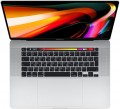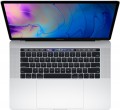Screen size
Diagonal size of laptop display.
The larger the screen, the more convenient the laptop for watching high-definition movies, modern games, working with large-format graphic materials, etc. Large screens are especially important for multimedia and gaming models. On the other hand, the diagonal of the display directly affects the size and cost of the entire device. So if portability is key, it makes sense to pay attention to relatively small solutions; especially since most modern laptops have video outputs like HDMI or DisplayPort and allow connection of large-format external monitors.
In light of all this, the actual maximum for laptops these days is
17"(17.3"); however
larger devices (18") reappeared at the beginning of 2023. The standard option for general purpose laptops is
15"(15.6"), less often
16", a diagonal of
13"(13.3") or
14" is considered small by the standards of such And smaller screens can be found mainly in specific compact varieties of laptops — ultrabooks, 2 in 1, transformers, netbooks; among such devices there are solutions for
12 ",
11" and even
10" or less.
Screen resolution
The resolution of the screen installed in the laptop — that is, the size of the screen in pixels horizontally and vertically.
Higher resolution, on the one hand, gives a sharper, more detailed image; on the other hand, it increases the cost of the laptop. The latter is connected not only with the cost of the displays themselves, but also with the fact that in order to work effectively at high resolutions, you need the appropriate filling (primarily a graphics card). This is especially true in games; so if you are looking for a laptop with a high-resolution screen that can effectively "run" modern games — you should pay attention not only to the characteristics of the display, but also to other data (the type and parameters of the graphics card, test results, the ability to work with certain games — see everything below). On the other hand, if the device is planned to be used for simple tasks such as working with documents, surfing the Internet and watching videos, you can not pay much attention to the “hardware” parameters: anyway, they are selected so that the laptop is guaranteed to be able to cope with such tasks on full resolution of the "native" screen.
As for specific numbers, the resolution options that are relevant today can be divided into 3 groups:
Full HD (1080),
Quad HD and
UltraHD 4K. Here is a more detailed description of them:
...— Full HD (1080). Initially, the Full HD standard provides a frame size of 1920x1080, and it is this resolution that is most often used in laptop screens from this category. However, in addition to this, other resolution options are also included in this format, where the vertical size is at least 1080 pixels, but does not reach 1440 pixels. Examples include 1920x1200 and 2560x1080. In general, Full HD displays provide a good balance between cost, image quality and laptop hardware requirements. Because of this, nowadays they are extremely widespread; matrices of this standard can be found even in low-cost devices, although they are mainly used in more advanced technology.
— Quad HD. A transitional option between the popular Full HD 1080 (see above) and the high-end and expensive UltraHD 4K. The vertical size of such screens starts from 1440 pixels and can reach 2000 pixels. Note that QuadHD resolutions are especially popular in Apple laptops; most often, such devices have 2560x1600 screens, although there are other options.
— Ultra HD 4K. The most advanced standard used in modern laptops. The vertical size of such screens is at least 2160 dots (up to 2400 in some configurations); the classic resolution of a modern UltraHD matrix is 3840x2160, but there are other values. Anyway, a 4K display allows for high image quality, however, it costs accordingly — including due to the corresponding requirements for a graphics adapter; in addition, to work with high resolutions, it can be more convenient to connect an external monitor to the laptop. Thus, such screens are used relatively rarely, and mainly among premium laptops.3DMark06
The result shown by the laptop processor in 3DMark06.
This test is primarily focused on testing performance in games — in particular, the ability of the processor to process advanced graphics and artificial intelligence elements. Test scores are reported as scores; the higher this number, the higher the performance of the tested chip. Good 3DMark06 results are especially important for
gaming laptops.
Passmark CPU Mark
The result shown by the laptop processor in the Passmark CPU Mark test.
Passmark CPU Mark is a comprehensive test that is more detailed and reliable than the popular 3DMark06 (see above). It checks not only the gaming capabilities of the CPU, but also its performance in other modes, based on which it displays the overall score; this score can be used to fairly reliably evaluate the processor as a whole (the more points, the higher the performance).
SuperPI 1M
The result shown by the laptop processor in the SuperPI 1M test.
The essence of this test is to calculate the number "pi" to the millionth decimal place. The time spent on this calculation is the final result. Accordingly, the more powerful the processor, the smaller the result will be (this SuperPI 1M is fundamentally different from many other tests).
RAM speed
The clock speed of the RAM installed in the laptop.
The higher the frequency (with the same type and amount of memory) — the higher the performance of RAM in general and the faster the laptop will cope with resource-intensive tasks. However modules with the same frequency may differ somewhat in actual performance due to differences in other characteristics; but this difference becomes significant only in very specific cases, for the average user it is not critical. As for specific values, the most popular modules on the modern market are
2400 MHz,
2666 MHz,
2933 MHz and
3200 MHz. Memory at
2133 MHz or less is found mainly in outdated and low-cost devices, and in high-performance configurations this parameter is
2933 MHz,
3200 MHz,
4266 MHz,
4800 MHz,
5200 MHz,
5500 MHz,
5600 MHz,
6000 MHz,
6400 MHz and
more.
Graphics card model
GeForce graphics cards from NVIDIA:
RTX represented by
RTX 2060,
RTX 2060 Max-Q,
RTX 2070,
RTX 2070 Max-Q,
RTX 2070 Super, RTX
2070 Super Max-Q,
RTX 2080,
RTX 2080 Max-Q,
RTX 2080 Super,
RTX 2080 Super Max-Q,
RTX 3050,
RTX 3050 Ti,
RTX 3060,
RTX 3060 Max-Q,
RTX 3070,
RTX 3070 Max-Q, RTX 3070 Ti, RTX 3080,
RTX 3080 Ti,
RTX 4050,
RTX 4060,
R TX 4070,
RTX 4080,
RTX 4090,
RTX 5070,
RTX 5070 Ti,
RTX 5080,
RTX 5090;
MX1xx represented by MX110, MX130 and MX150,
MX2xx(MX230 and MX250),
MX3xx(MX330 and MX350),
MX450, GTX which represent GTX 1050,
GTX 1060,
GTX 1060 Max-Q,
GTX 1070,
GTX 1070 Max-Q,
GTX 1080,
GTX 1080 Max-Q,
GTX 1650,
GTX 1650 Max-Q,
GTX 1650 Ti,
GTX 1660 Ti,
GTX 1660 Ti Max-Q and. AMD also offers video cards
Radeon 520,
Radeon 530(535),
Radeon 540X,
Radeon 610(625, 630),
Radeon RX 550 (550X, 560),
Radeon RX 640,
Radeon RX 5500M,
Radeon RX 6800M and
Radeon Pro.
Note that all the above models are discrete. Actually, for a configuration with discrete graphics, it is the model of a separate video adapter that is indicated; if it is supplemented by an integrated module, the name of this module can be clarified by the official characteristics of the processor.
It is also worth mentioning that this paragraph does not give the full name of the model, but only its name within the series (the series itself is given separately - see above). However, knowing the series and model, one can easily find detailed information about the graphics card.
Memory type
The type of dedicated graphics memory used by the discrete graphics card (see "Video Card Type").
— GDDR3. The third generation of memory based on double data transfer technology. Compared to the previous standard, GDDR 2 is capable of operating at higher frequencies and less heat. However, it is gradually being replaced by more advanced standards, in particular GDDR5.
— GDDR5. Fifth generation graphics memory with double data transfer; in this generation, for the first time, the DDR3 RAM standard was taken as the basis. It is considered quite advanced, typical mainly for high-performance video cards.
— GDDR5X. A modification of the GDDR5 described above, introduced in early 2016. Compared to the original, it provided a 2-fold increase in maximum throughput, which accordingly affected the overall performance. However such video cards are not cheap, which is why they are used mainly in premium gaming laptops.
— GDDR6. Further, after GDDR5X, the development of GDDR-type graphic memory, introduced in 2017. Provides twice the speed of the original GDDR5, with slightly less power consumption; GDDR6 capabilities are enough, in particular, for use in virtual reality systems and work with resolutions above 4K. The use of such memory is typical for the most advanced video cards installed mainly in powerful gaming laptops.
— HBM2. The second generation of HBM type memory. Unlike the GDDR described above, HBM is not a modificat...ion of the usual "RAM" of the DDR type, but a separate type of memory, developed including for video cards. Due to the design features, such memory provides high bandwidth at a low clock frequency; the latter has a positive effect on power consumption and heat dissipation, and in terms of performance, HBM2 outperforms even the most advanced versions of GDDR. The disadvantage of this option is traditional — high price; because of it, video cards with this type of memory are installed mainly in premium laptops.
Drive capacity
The capacity of the drive installed in the laptop. If there are several separate drives (for example, HDD + SSD, see "Drive type") — this item indicates the volume of the most capacious drive (in our example — HDD).
A larger drive allows you to store more data, but it also comes at a higher cost. At the same time, it is worth remembering that the price also depends on the type of media: for example, SSDs are much more expensive than hard drives of the same volume. So it is best to directly compare drives of the same type with each other. As for specific volumes, the most modest figures are typical for configurations with pure solid-state memory — SSD of one type or another or eMMC (see "Drive type"): among them you can find solutions for
240 – 360 GB or less . Hard drive capacity actually starts at
480 – 512 GB ;
1TB storage capacity is average, and the most capacious modern laptops are equipped with storage
of 2TB or even
more.

